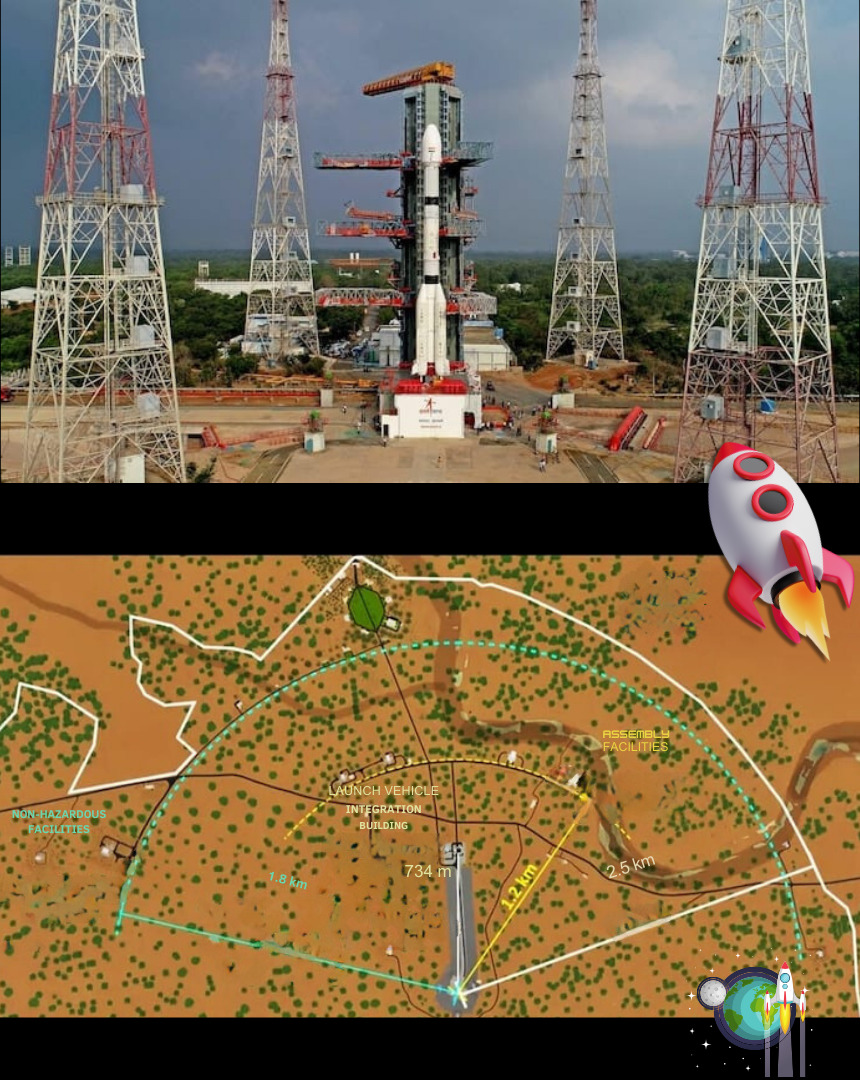 The chairman of the Indian Space Research Organisation, S. Somanath, has announced that the Kulasekarapattinam spaceport will be operational within two years, specifically designed for launching small satellites. Following the foundation stone ceremony for the Kulasekarapattinam spaceport by Prime Minister Narendra Modi on Wednesday, February 28, 2024, ISRO chairman Somanath, in a casual conversation with journalists, mentioned that the construction of ISRO’s second satellite launch site is expected to be finished in two years.
The chairman of the Indian Space Research Organisation, S. Somanath, has announced that the Kulasekarapattinam spaceport will be operational within two years, specifically designed for launching small satellites. Following the foundation stone ceremony for the Kulasekarapattinam spaceport by Prime Minister Narendra Modi on Wednesday, February 28, 2024, ISRO chairman Somanath, in a casual conversation with journalists, mentioned that the construction of ISRO’s second satellite launch site is expected to be finished in two years.
Covering 2,233 acres, the new spaceport is set to drive development and growth in the Thoothukudi district. It will complement the existing facility in Sriharikota. With a substantial investment of Rs 950 crore, this project stands as a key landmark in the advancement of India’s space exploration efforts.
This new facility is being developed specifically for launching Small Satellite Launch Vehicles (SSLVs), aimed at placing small satellites into their designated orbits. Additionally, he noted that the forthcoming spaceport would be capable of conducting up to 24 satellite launches annually.
Somanath remarked that the Rohini Sounding Rocket, launched from a mobile platform on February 28 to signal the start of construction activities at the spaceport, is expected to achieve an altitude of up to 60 kilometres.
When ISRO launches a satellite up from its Sriharikota site in Andhra Pradesh, the rocket goes east first and then changes direction to the south. This change in direction is done to make sure it doesn’t fly over airspace of Sri Lanka, which is located south of Sriharikota.
Covering 2,233 acres, the new spaceport is set to drive development and growth in the Thoothukudi district. It will complement the existing facility in Sriharikota. With a substantial investment of Rs 950 crore, this project stands as a key landmark in the advancement of India’s space exploration efforts
Somanath explained that rockets launching from the Kulasekaranpattinam spaceport won’t need to change their path; they can directly head south. Additionally, since Kulasekaranpattinam is nearer to the equator compared to Sriharikota, these aspects are expected to help in conserving fuel.
He mentioned that ISRO has developed SSLVs specifically for deploying lightweight satellites affordably. These vehicles are capable of sending satellites weighing under 500 kg into lower earth orbit. However, launching from Sriharikota is costlier because the rocket has to cover a greater distance. This necessitates carrying more fuel, which, in turn, diminishes the rocket’s capacity for carrying payload. He highlighted that for these reasons, ISRO scientists find it challenging to launch small rockets from Sriharikota.
Scientists are of the opinion that the new spaceport being developed in Kulasekaranpattinam could effectively address this issue. Additionally, the ISRO Propulsion Research Complex situated in Mahendragiri, within the Tirunelveli district, is notably closer to the Kulasekarapattinam spaceport. This centre is where rocket propellants are produced, tested, and then transported over a distance of 780 km to Sriharikota.
The distance from Kulasekaranpattinam to the Propulsion Research Complex is just 88 kilometres, significantly reducing the time and cost of transporting rocket components safely. These advantages make Kulasekaranpattinam a more favourable choice.
ISRO has developed SSLVs specifically for deploying lightweight satellites affordably. These vehicles are capable of sending satellites weighing under 500 kg into lower earth orbit. However, launching from Sriharikota is costlier because the rocket has to cover a greater distance
The government of Tamil Nadu has finalised the acquisition of land for this initiative, coinciding with the central government’s decision to allow 100% Foreign Direct Investment (FDI) in the space sector. In addition, the state is establishing a Space Industrial and Propellants Park over an area of 2,000 acres in the district. This move is aimed at fostering a dynamic environment for entities operating in the space industry within the region.
Experts predict the rise of various ancillary industries nearby, leading to the creation of thousands of jobs, which will advantageously impact the Thoothukudi district in Tamil Nadu.
The creation of the second spaceport along with the Space Industrial and Propellants Park is expected to enhance India’s stature in the international small satellite arena, while also fostering job creation and promoting growth in the coastal area of Kulasekarapattinam.
-The writer is a Defence, Aerospace and Political Analyst based in Bengaluru. He is also Director of ADD Engineering Components, India, Pvt. Ltd, a subsidiary of ADD Engineering GmbH, Germany. You can reach out to him at: girishlinganna@gmail.com















